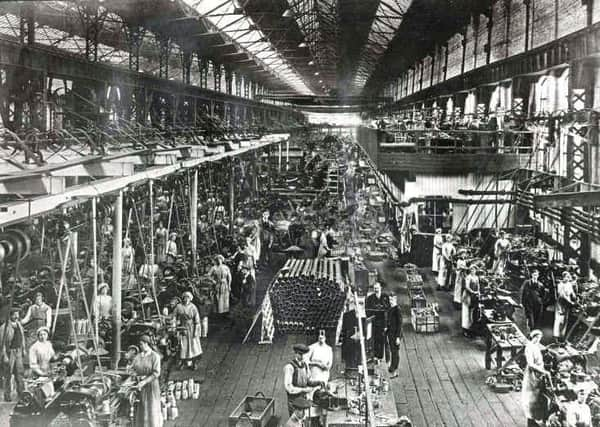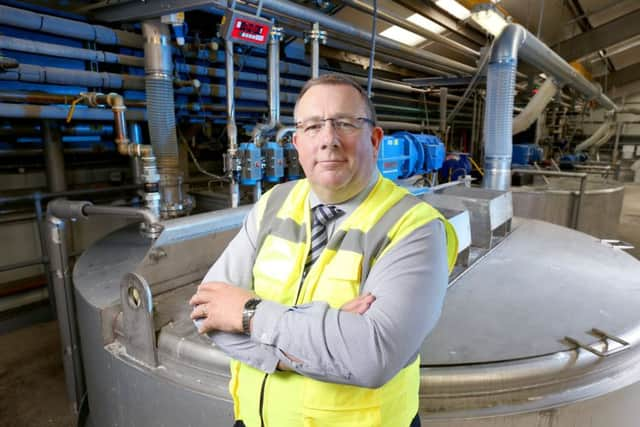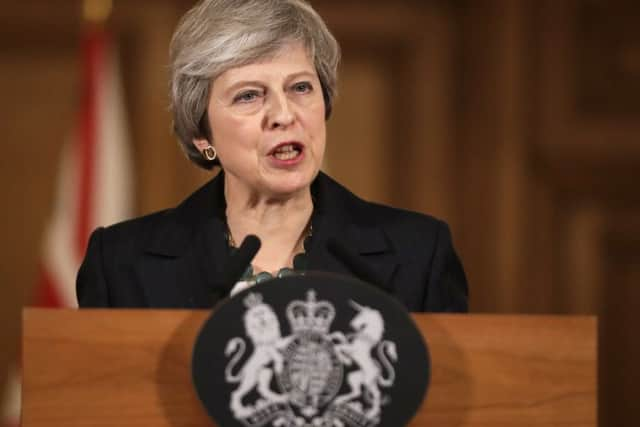Mark Casci: Let us hope that what we have now is the low point


That is the grim reality facing Yorkshire’s manufacturing industry, according to a Barclays report.
While digital, technology and educational careers remain the most popular option among young people, a sector which encompasses all three of these areas is increasingly finding itself out of favour.
Advertisement
Hide AdAdvertisement
Hide AdIt is clear from the research, and the experiences that so many employers are facing when it comes to recruiting into the sector, that there is a massive disconnect between the reality of manufacturing and its image.
Modern media does not help.
Turn on any drama series or film and the cool and smart young people are all adorned in smart suits, working in legal offices or laboratories.
High visibility jackets on every single visiting dignitary to every single factory in the broadcast news do not help either.
It gives the message to young people that the sector is unfashionable and dangerous, and that coming within 100 metres of any piece of machinery or equipment needs this garish vest and hard hat to protect you from certain death.


Advertisement
Hide AdAdvertisement
Hide AdThere is some good work in this region to try and address this imbalance.
One need only look at the fine work carried out by Nick Garthwaite during his time as Bradford Chamber of Commerce’s president to link the city’s manufacturers with school-age children.
His Bradford Manufacturing Week linked thousands of young people with the sector. A similar initiative was staged in Leeds to much aplomb.
In South Yorkshire two household names set up shop in the shape of McLaren and Boeing.


Advertisement
Hide AdAdvertisement
Hide AdHopefully these occurrences will start to give our young people a truer picture of what life in the industry is actually like.
Rather than a life of yellow vested service to a machine, you have the chance to work across a range of industries which are ground-breaking, innovative and fit for the future.
Here’s hoping these glum statistics are as bad as it gets.
Speaking of as bad as it gets, the farce with our nation’s trading relationship with the world hit a new low this week.


After more than two years of promises, platitudes, talks and resignations, Theresa May’s deal seems to have pretty much zero chance of getting through the House of Commons on Tuesday.
Advertisement
Hide AdAdvertisement
Hide AdIn a debate which has been dominated by ideology and misinformation, it will be almost a certainty that the forecasts from the CBI today that, were the house to back Mrs May’s deal, that the economy should grow by 1.4 per cent next year and 1.6 per cent in 2020.
Let’s be clear what that means. It means the economy will continue to have growth that is weak, but growth nonetheless. By way of comparison, in 2010 – as the world emerged staggering from the financial crisis – we grew at 1.7 per cent.
Just four years ago, GDP was 3.1 per cent. Last year it was 1.8 per cent.
You might wonder why anyone would be backing a deal that delivered anaemic economic growth such as this and you would be right,
Advertisement
Hide AdAdvertisement
Hide AdThe growth forecasts are not good by any stretch, but they are infinitely better than those predicted if we fail to reach a deal. The UK only trades with 24 countries under WTO rules and even those have special agreements in place. The 68 others are all as a result of being part of the EU.


I have little time for a second referendum, as I have outlined in this pages on several previous occasions. This issue is tearing our country apart. The last referendum saw a political assassination by a far right extremist. A further putting of this to the public would, I fear, deliver far worse consequences for our social fabric.
However, with so little support in the Commons, and so many divergent viewpoints, it seems clear that a further period in limbo draws nearer and that the debate over Brexit will continue tomorrow, tomorrow and tomorrow, in this petty pace.